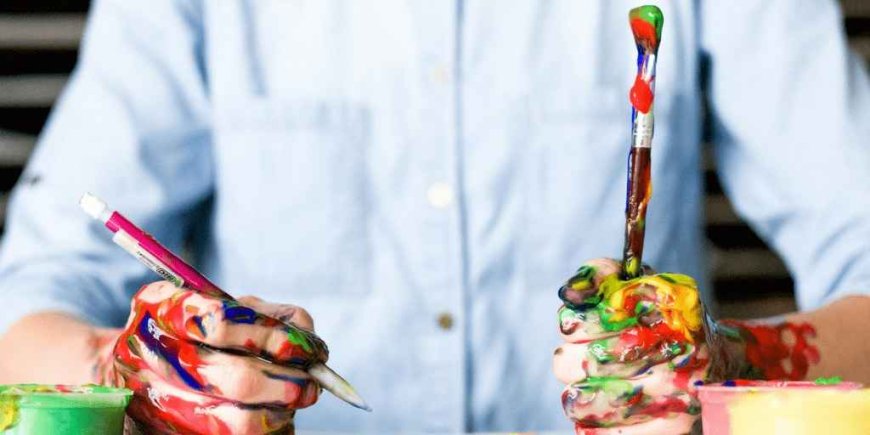Unleashing the Power of Creative Teaching Strategies
In the ever-evolving landscape of education, creative teaching strategies have emerged as a beacon of innovation,

In the ever-evolving landscape of education, creative teaching strategies have emerged as a beacon of innovation, captivating students' hearts and minds. This article delves into the transformative potential of creative teaching, exploring how educators can infuse imagination, engagement, and joy into the learning process.
The Art of Creative Teaching: A Paradigm Shift
Creative teaching transcends traditional methods, fostering an environment where curiosity thrives and students become active participants in their own learning journey. This approach involves blending imaginative techniques, experiential learning, and unconventional resources to spark intellectual and emotional growth.
Harnessing Imagination: The Heart of Creative Teaching
Incorporate Storytelling: Narratives captivate the imagination, making complex subjects relatable and memorable. Integrating stories, real-world anecdotes, or fictional scenarios into lessons can instill a sense of wonder and curiosity.
Visual and Kinesthetic Learning: Utilize visual aids, diagrams, and hands-on activities to cater to diverse learning styles. Incorporating movement and touch enhances understanding and retention.
Gamification and Play: Infuse elements of play and gaming into lessons. Gamified challenges, puzzles, and role-playing not only make learning enjoyable but also enhance critical thinking skills.
Artistic Expression: Encourage students to express concepts through art, music, drama, or dance. Creative outlets enable deeper exploration and interpretation of subject matter.
Engagement through Experiential Learning
Field Trips and Outdoor Learning: Taking learning beyond the classroom exposes students to real-world applications. Field trips to museums, parks, and community spaces enhance experiential understanding.
Hands-On Projects: Assign projects that require problem-solving and hands-on creation. Building models, conducting experiments, or designing prototypes fosters active engagement.
Role-Playing and Simulations: Immersive role-playing scenarios enable students to step into historical, scientific, or fictional contexts, fostering empathy and critical thinking.
Collaborative Learning: Group projects and discussions encourage peer-to-peer teaching and collaborative problem-solving, enhancing social skills alongside academic learning.
Nurturing a Joyful Learning Experience
Choice and Autonomy: Grant students choices in topics, projects, or learning pathways. Autonomy fosters a sense of ownership, motivation, and personal investment.
Celebration of Curiosity: Embrace and celebrate students' questions, encouraging a culture of inquiry and intellectual exploration.
Real-World Relevance: Highlight the practical applications of subjects to students' lives, demonstrating how learning is relevant beyond the classroom.
Reflection and Self-Assessment: Regularly encourage students to reflect on their learning journey and set goals. Self-assessment promotes metacognition and self-directed learning.
Creative Teaching in a Digital Age
Multimedia Integration: Incorporate multimedia elements such as videos, podcasts, and interactive simulations to enhance engagement and cater to diverse learning styles.
Virtual Reality and Augmented Reality: Leverage VR and AR technologies to create immersive learning experiences, transporting students to historical eras or far-flung destinations.
Digital Storytelling: Encourage students to create digital stories using multimedia tools. This modern twist on traditional storytelling enhances communication skills.
Online Collaboration Platforms: Utilize online platforms for collaborative projects, discussions, and knowledge sharing among students, fostering a sense of connectedness.
Empowering Educators for Creative Teaching
Continuous Professional Development: Educators can attend workshops, webinars, and conferences to discover new creative teaching strategies and refine their existing approaches.
Networking and Collaboration: Connecting with fellow educators allows for the exchange of ideas, resources, and successful strategies that enhance the creative teaching process.
Reflective Practice: Regularly assess the effectiveness of creative teaching strategies through self-reflection and feedback from students. Adjust and iterate based on results.
Experimentation and Innovation: Embrace experimentation in the classroom. Innovative approaches may lead to unexpected breakthroughs in engagement and learning outcomes.
The Future of Education: A Canvas of Creativity
Creative teaching strategies are at the forefront of a transformative education landscape. As educators continue to explore innovative techniques, the traditional classroom evolves into a dynamic space where curiosity, exploration, and collaboration thrive.
Creative teaching breathes life into education, fostering a love for learning that transcends textbooks and exams. By embracing imagination, experiential learning, and joyful engagement, educators empower students to become lifelong learners who approach challenges with curiosity and innovation. As the educational journey unfolds, the canvas of creativity remains limitless, guiding students toward a future illuminated by knowledge and inspiration.
